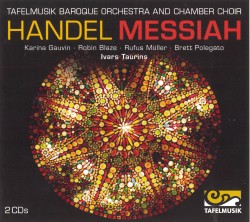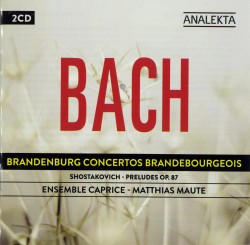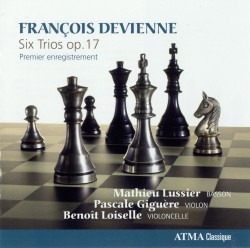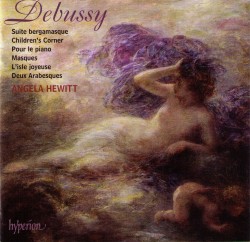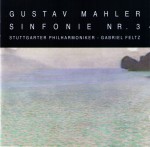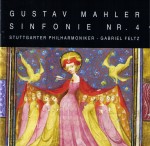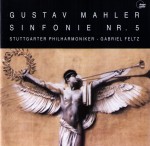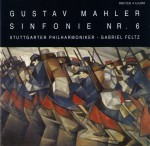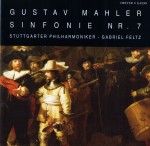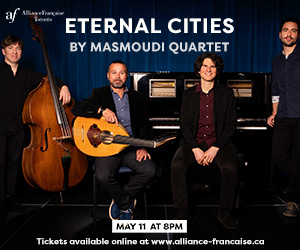Christmas came early for me with the release of so many new Beethoven sonata CDs. Each pianist has done an exemplary job in recording their interpretation of the Beethoven masterpieces and I wish I could write more. All of these releases deserve detailed critiques. Some CDs resonated more with me than others but it is an entirely subjective reaction. All performances were impeccable musically and technically. However, we all respond differently to the individual voices and inflection of each performer’s unique phrasing and tempo. In fact we are listening to each pianist translate Beethoven’s musical speech. Music as a language has been a constant metaphor throughout the centuries before and after Beethoven. Greeks and Romans associated music with spoken rhetoric and musical execution may be compared with the delivery of an orator. By way of the spoken voice or musical gesture, performers hope to capture the hearts and attention of their listeners and arouse or quiet their passions by transporting them to a sublime musical experience. As pianos improved with more rapid decay of sound, quick and efficient damping and variation of timbre from one register to another, Beethoven began writing for the articulate brilliance of a “speaking music.” He also immersed himself in the treatises of authors such as Johan Mattheson and Emanuel Bach, discovered from reading ancient rhetoric by the Greek and Roman writers. Beethoven learned through the classical oratory to describe music as gestural art and cultivate the art of eloquent musical discourse and musical declamation. Here are the pianists who spoke to me in their Beethoven CDs.
 Stewart Goodyear: Beethoven – The Complete Piano Sonatas (Marquis MAR 513) I had the pleasure of hearing Stewart Goodyear perform the entire set of Beethoven Sonatas at a marathon in Koerner Hall last June. He is an amazing pianist with formidable technique, stamina and fortitude. His talent is promethean and his playing eloquent and polished throughout the set. Like an orator, Goodyear takes you on a dramatic operatic journey, embracing every nuance and detail. Beethoven had carried the declamatory style into the new century with articulative tools such as legato and slurs crossing bar lines to subsume points of arrival. Beethoven used speech-mimetic effects in his keyboard works in order to approximate speech articulation. According to Czerny, he adopted the methods of singers and recommended putting words to passages or listening to string or wind instruments. Goodyear has given much thought to the form and structure of each sonata. I might quibble here and there about certain tempi or tonal nuance but his level of artistry is truly exceptional. His command of the keyboard and depth of emotion, especially in the last five sonatas is moving and intense. Like a good book, once you start listening it is difficult to stop and that is a remarkable accomplishment for this young artist.
Stewart Goodyear: Beethoven – The Complete Piano Sonatas (Marquis MAR 513) I had the pleasure of hearing Stewart Goodyear perform the entire set of Beethoven Sonatas at a marathon in Koerner Hall last June. He is an amazing pianist with formidable technique, stamina and fortitude. His talent is promethean and his playing eloquent and polished throughout the set. Like an orator, Goodyear takes you on a dramatic operatic journey, embracing every nuance and detail. Beethoven had carried the declamatory style into the new century with articulative tools such as legato and slurs crossing bar lines to subsume points of arrival. Beethoven used speech-mimetic effects in his keyboard works in order to approximate speech articulation. According to Czerny, he adopted the methods of singers and recommended putting words to passages or listening to string or wind instruments. Goodyear has given much thought to the form and structure of each sonata. I might quibble here and there about certain tempi or tonal nuance but his level of artistry is truly exceptional. His command of the keyboard and depth of emotion, especially in the last five sonatas is moving and intense. Like a good book, once you start listening it is difficult to stop and that is a remarkable accomplishment for this young artist.
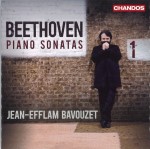 Jean-Efflam Bavouzet: Beethoven – Piano Sonatas Volume 1 (Chandos CHAN 10720) I love these three CDs. They spoke to me on so many levels. The warm, velvety sound Bavouzet achieves suggested an intimate conversation, almost whispered at times. More robust movements were lively but enveloped in honeyed tonal colours. I was mesmerized and hypnotized by the tenderness and sensitivity in his playing. Every phrase, every nuance and ornament was lovingly played. Bavouzet’s shaping of phrases was fluid and his articulation superb. The cantabile lines sang and the quiet, tranquil movements were introspective. The faster, more robust movements had great energy and pulsed with rhythmic inflection. The piano writing in the early sonatas embraced a multitude of textures, borrowing from the symphonic style, string quartet and other chamber music. Bavouzet emphasized this in his playing. In his program notes he is as articulate as in his performance. He asks the question: “Why record more Beethoven?” “And if Beethoven’s music is still alive within us and continues to inspire and inform us about how we relate with the world, is it not absolutely crucial that we should be alert to its enduring vitality and modernity? And why should music lovers be denied the opportunity to associate the new insights of living musicians with this immortal repertoire?” Excellent words and playing. Volume 1 includes sonatas from Opp.2, 7, 10, 13 and 14.
Jean-Efflam Bavouzet: Beethoven – Piano Sonatas Volume 1 (Chandos CHAN 10720) I love these three CDs. They spoke to me on so many levels. The warm, velvety sound Bavouzet achieves suggested an intimate conversation, almost whispered at times. More robust movements were lively but enveloped in honeyed tonal colours. I was mesmerized and hypnotized by the tenderness and sensitivity in his playing. Every phrase, every nuance and ornament was lovingly played. Bavouzet’s shaping of phrases was fluid and his articulation superb. The cantabile lines sang and the quiet, tranquil movements were introspective. The faster, more robust movements had great energy and pulsed with rhythmic inflection. The piano writing in the early sonatas embraced a multitude of textures, borrowing from the symphonic style, string quartet and other chamber music. Bavouzet emphasized this in his playing. In his program notes he is as articulate as in his performance. He asks the question: “Why record more Beethoven?” “And if Beethoven’s music is still alive within us and continues to inspire and inform us about how we relate with the world, is it not absolutely crucial that we should be alert to its enduring vitality and modernity? And why should music lovers be denied the opportunity to associate the new insights of living musicians with this immortal repertoire?” Excellent words and playing. Volume 1 includes sonatas from Opp.2, 7, 10, 13 and 14.
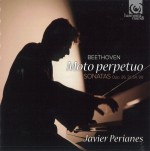 Javier Perianes: Beethoven – Moto perpetuo: Sonatas Opp.26, 31, 54, 90 (Harmonia Mundi HMC 902138) This recording couples four sonatas which end with “moto perpetuo,” a selection that deliberately underlines their similarity but also the diversity of the results Beethoven achieves using the same basic idea. Beethoven explored, like no one else, the possibilities of this compositional concept. The incessant repetition of the moto perpetuo has influenced keyboard composers and performers since before Bach. However, the development of the piano and its quicker action ensured the receptivity of this mode of writing. As to the tempo of these fast movements, Carl Maria von Weber speaks “of human pulse as a model of tempo as informed by an apprehension of periodicity in declamation. The beat, the tempo must not be a controlling tyrant nor a mechanical driving hammer, it should be to a piece of music what the pulse is to the life of man.” There also has to be a contrast in the music of speed. A presto needs tranquil moments to prevent the illusion of excessive speed. Javier Perianes performed the slow tranquil moments with tenderness and warmth. Beautifully shaped phrases were liquid and flowed effortlessly from one to another. I was very impressed with his musicality and the direct way he approached the music. The moto perpetuo movements did not use daredevil tempos but were articulate and exciting. I loved the care with which he pushed and pulled the musical phrases, slow or fast. Nothing was unnatural and accents were not harsh. His tone always retained warmth and was deep with rich colour. Here was another CD I couldn’t stop listening to and I look forward to more Beethoven from this excellent pianist.
Javier Perianes: Beethoven – Moto perpetuo: Sonatas Opp.26, 31, 54, 90 (Harmonia Mundi HMC 902138) This recording couples four sonatas which end with “moto perpetuo,” a selection that deliberately underlines their similarity but also the diversity of the results Beethoven achieves using the same basic idea. Beethoven explored, like no one else, the possibilities of this compositional concept. The incessant repetition of the moto perpetuo has influenced keyboard composers and performers since before Bach. However, the development of the piano and its quicker action ensured the receptivity of this mode of writing. As to the tempo of these fast movements, Carl Maria von Weber speaks “of human pulse as a model of tempo as informed by an apprehension of periodicity in declamation. The beat, the tempo must not be a controlling tyrant nor a mechanical driving hammer, it should be to a piece of music what the pulse is to the life of man.” There also has to be a contrast in the music of speed. A presto needs tranquil moments to prevent the illusion of excessive speed. Javier Perianes performed the slow tranquil moments with tenderness and warmth. Beautifully shaped phrases were liquid and flowed effortlessly from one to another. I was very impressed with his musicality and the direct way he approached the music. The moto perpetuo movements did not use daredevil tempos but were articulate and exciting. I loved the care with which he pushed and pulled the musical phrases, slow or fast. Nothing was unnatural and accents were not harsh. His tone always retained warmth and was deep with rich colour. Here was another CD I couldn’t stop listening to and I look forward to more Beethoven from this excellent pianist.
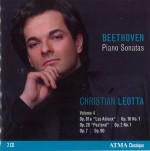 Christian Leotta: Beethoven – Piano Sonatas Volume 4 (ATMA ACD2 2489) Chords are in music what words are in language. A harmonic sentence or period consists of several chords that are connected. A succession of many sentences constitutes an entire speech and a composition consists of a succession of many periods. Christian Leotta chooses to speak not only in volumes but in unique ones. His inflections in musical speech might not be to everyone’s taste but his declamatory playing commands that you listen. According to Beethoven’s critical comments on Czerny’s playing, he wanted all the rhythmic accents stressed quite heavily. He did not want flat performances, even if they were eloquent. Christian Leotta obliges us with his personal interpretation of the sonatas. He has a prodigious technique and an innate musicality. I admire his attention to the form and structure of each movement and his exquisite detailing. Volume 4 includes sonatas from Opp.2, 7, 10, 28, 81a and 90 and in it Leotta has presented us with another extremely worthy CD that deserves many hearings.
Christian Leotta: Beethoven – Piano Sonatas Volume 4 (ATMA ACD2 2489) Chords are in music what words are in language. A harmonic sentence or period consists of several chords that are connected. A succession of many sentences constitutes an entire speech and a composition consists of a succession of many periods. Christian Leotta chooses to speak not only in volumes but in unique ones. His inflections in musical speech might not be to everyone’s taste but his declamatory playing commands that you listen. According to Beethoven’s critical comments on Czerny’s playing, he wanted all the rhythmic accents stressed quite heavily. He did not want flat performances, even if they were eloquent. Christian Leotta obliges us with his personal interpretation of the sonatas. He has a prodigious technique and an innate musicality. I admire his attention to the form and structure of each movement and his exquisite detailing. Volume 4 includes sonatas from Opp.2, 7, 10, 28, 81a and 90 and in it Leotta has presented us with another extremely worthy CD that deserves many hearings.
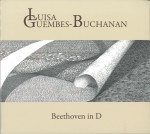 Luisa Guembes-Buchanan: Beethoven in D (www.beethovenpianoworks.com) I liked the care with which the choices were made for this self-produced CD. The three sonatas presented share the tonality of D (two major and one minor) but are radically different from one another in character. I did enjoy her intense leading of the musical phrase. Her interpretations draw you in. In a few spots she neglected pushing through to the end of the phrase. Some of the accents were too harsh and she needs to vary the tonal quality of the accents. Like in speech it is the inflection that is powerful, not necessarily the shouting. Although some of the playing was rough I did enjoy the energy and the slow movements were played with deep emotion and feeling. I could feel the pain and longing of Beethoven.
Luisa Guembes-Buchanan: Beethoven in D (www.beethovenpianoworks.com) I liked the care with which the choices were made for this self-produced CD. The three sonatas presented share the tonality of D (two major and one minor) but are radically different from one another in character. I did enjoy her intense leading of the musical phrase. Her interpretations draw you in. In a few spots she neglected pushing through to the end of the phrase. Some of the accents were too harsh and she needs to vary the tonal quality of the accents. Like in speech it is the inflection that is powerful, not necessarily the shouting. Although some of the playing was rough I did enjoy the energy and the slow movements were played with deep emotion and feeling. I could feel the pain and longing of Beethoven.
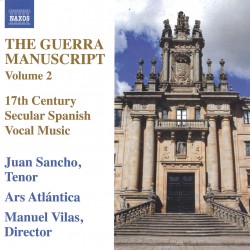 The Guerra Manuscript Volume 2: 17th Century Secular Spanish Vocal Music
The Guerra Manuscript Volume 2: 17th Century Secular Spanish Vocal Music

